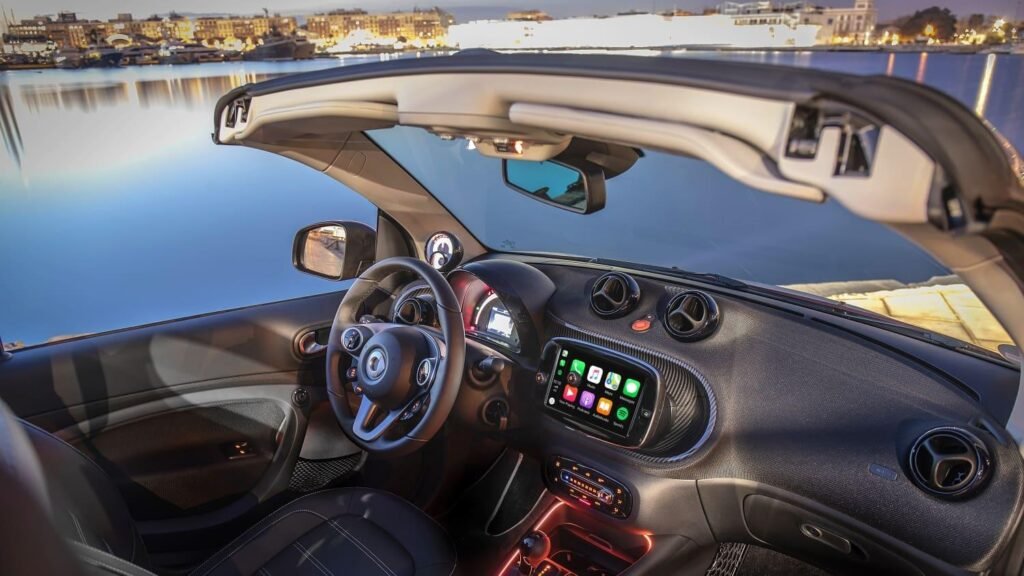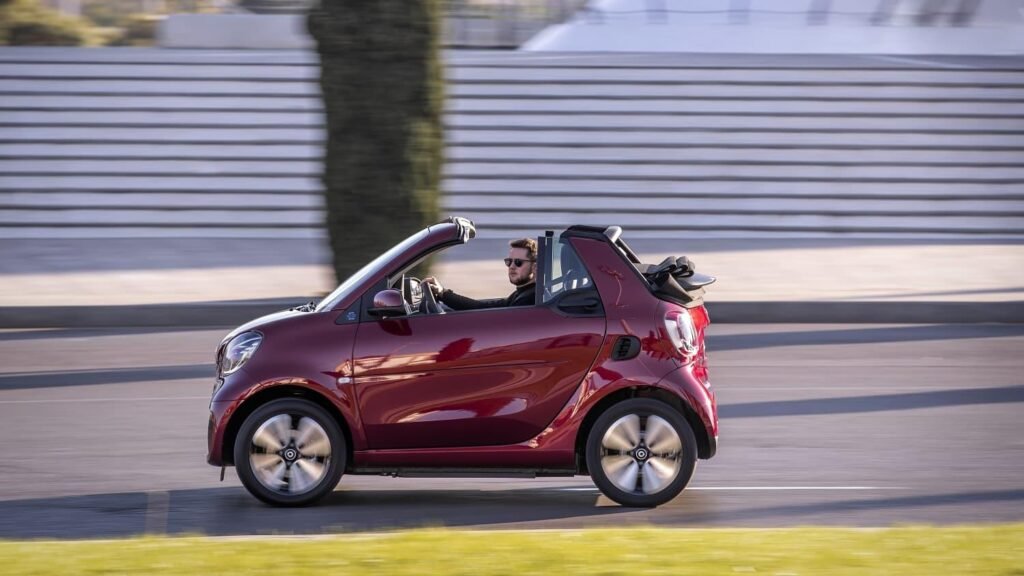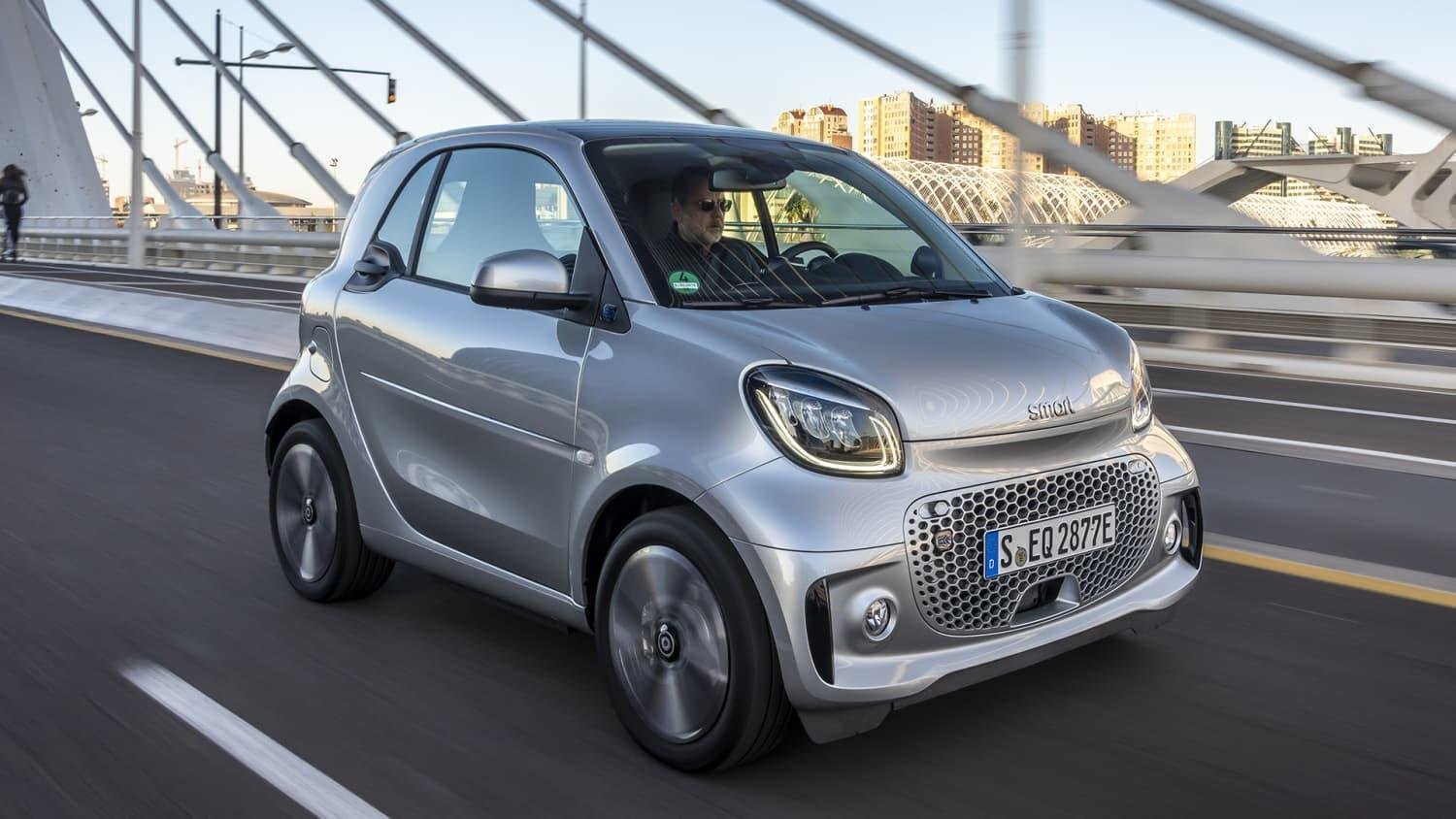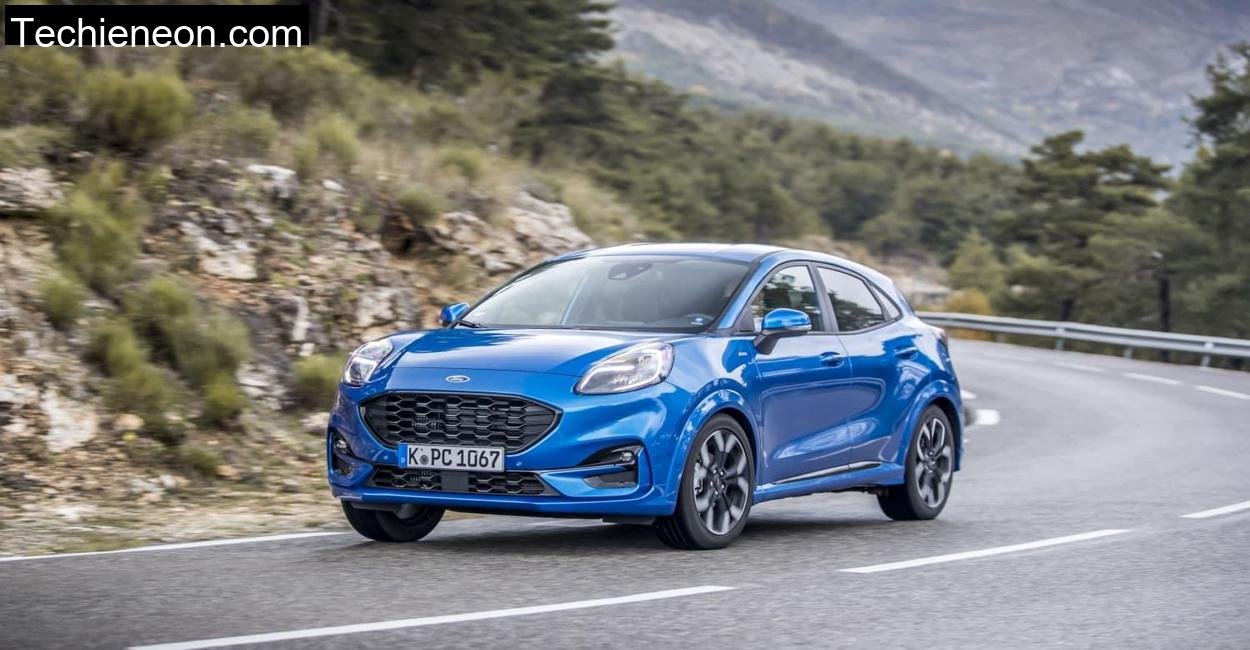The Barnacken in the Teutoburg Forest, a quiet elevation rising modestly to just under 450 meters, might not sound like the most natural proving ground for a small electric car. But for testing the Smart EQ forfour, it’s perfect. This part of North Rhine-Westphalia offers tight, twisting forest roads, sudden gradients, small towns, and narrow lanes. Ideal, then, for gauging how well the electric Smart handles the real-world chaos of daily driving, not on pristine Autobahns or sterile test tracks, but where it matters most: in the everyday.
The car? A 2020 Smart EQ forfour. Small. Electric. Supposedly urban. The little guy is no longer in production, with Smart shifting focus to larger China-built EVs. But on the used market, the EQ forfour still beckons bargain hunters and urban dwellers alike. And here on the Barnacken, it has to prove itself. Let’s dive in.
The Current Generation Looks Like the Previous One

The EQ forfour doesn’t scream “I’m electric!” like some EVs do. At a glance, it’s almost indistinguishable from the older combustion Smarts. That’s either a feature or a flaw, depending on your taste.
There are small cosmetic updates, the grille now body-colored, a Smart logo replacing the old emblem, and redesigned headlights. But overall, it’s still recognizably Smart: upright, minimal overhangs, bubble-like silhouette. There’s a visual honesty here. It doesn’t pretend to be anything more than a tiny, urban four-seater.
Inside, it’s more of the same. A simple, plasticky cabin with a mix of black and dark grey materials. A roller-blind-style center console storage is the only real nod to modern convenience. The 8.9 cm central infotainment screen looks like a postage stamp compared to today’s dashboard-spanning displays, and the speedometer is an awkward half-digital, half-analog affair that’s hard to read on the move.
Still, for a car this small, it doesn’t feel oppressively cramped in the front. That changes once you slide into the back seat.
Little Space in the 3.50-Meter Forfour
I’m 1.85 meters tall, and with the driver’s seat adjusted for my frame, no one over 1.65 meters would sit comfortably behind me. Rear legroom is minimal. This car might have four doors, but it’s not made for four adults.
The trunk? Smart says 185 liters, but in practice, 150 is more realistic. That’s a couple of tote bags and a laptop case, not much else. Fold the rear seats, and you can cram in groceries for a week, if you’re careful.
Still, there’s a magic trick the Smart EQ plays: the turning circle. At just 9 meters for the forfour and a jaw-dropping 6.95 meters for the fortwo, this thing spins around tighter than most forklifts. In the narrow alleys of Horn-Bad Meinberg, I did a complete U-turn without needing reverse. That alone justifies its urban credentials.
Disappointing Range: Only 100 Kilometers
Let’s get to the elephant in the room: range. Or lack thereof. With a 17.6 kWh battery (only 16.7 kWh usable), the EQ forfour can barely stretch to 100 kilometers in mixed driving, that’s ADAC’s real-world figure, and it matches my experience.
On the Barnacken’s undulating roads, with regenerative braking helping on the downhills but consumption spiking on every climb, I averaged 18.4 kWh/100 km. That’s city-car efficiency, but not long-distance capability.
On a full charge, I barely managed 105 km before the warning lights started blinking. That’s manageable if your daily grind is a 15-minute commute, but for anything longer, it’s a logistical headache. Even with the optional 22 kW charger (ours had it), you’re looking at 40 minutes to go from 10 to 80 percent. On a regular wall socket? Try six hours.
It makes the Smart EQ a car with a very specific use case. Ideal for short city hops. Useless for road trips.
Smarties Are Fun to Drive

Now for the fun part. And yes,the EQ forfour is fun.
City traffic in Detmold melted away thanks to the Smart’s ultra-compact footprint and snappy throttle response. There’s just 82 hp and 160 Nm on tap, but the torque arrives instantly. From a stoplight to 60 km/h? 4.8 seconds. It feels quicker than its spec sheet suggests.
Through the Barnacken’s serpentine roads, the short wheelbase and rear-wheel drive combo delivered a surprisingly agile feel. Steering is sharp, body roll is minimal, and there’s an eager, cheeky character that’s hard to find in today’s overgrown EVs.
But outside the city, reality kicks in. Acceleration from 60 to 100 km/h takes 8.1 seconds, and the sprint to 100? A glacial 12.7 seconds. Top speed is limited to 130 km/h. Any faster, and the battery would evaporate.
Still, within its limits, the EQ forfour is a riot. Urban mobility distilled to its purest form.
The Future of Smart Lies in China
Smart’s future doesn’t lie in Sindelfingen anymore. Production of the EQ forfour ceased in 2024, and the brand has shifted entirely to China under the joint venture between Mercedes and Geely. The new face of Smart is the #1,a larger, SUV-shaped EV that’s light-years from the original Swatchmobile idea.
For purists, that’s a loss. The EQ forfour might be flawed, but it’s faithful to the original ethos: compact, clever, and electric. The Chinese-built successors may offer more space and tech, but they’ll never fit in your living room like the old ones almost could.
Technical Specifications (Smart EQ forfour)
We rely on Mercedes -Benz official site for technical data so you get the right info every time.
| Specification | Detail |
| Engine Type | Electric |
| Power (kW / HP) | 60 kW / 82 HP |
| Torque | 160 Nm |
| Drive | Rear-wheel drive |
| 0–100 km/h | 12.7 seconds |
| Top Speed | 130 km/h |
| Battery Capacity (Gross / Net) | 17.6 / 16.7 kWh |
| Charging Power | AC: 2.3,22.0 kW |
| Range (WLTP / ADAC real-world) | 129 km / approx. 100 km |
| Trunk Volume | 185 liters (max 975 l folded) |
| Vehicle Length x Width x Height | 3,495 x 1,665 x 1,554 mm |
| Curb Weight | 1,200 kg |
| Payload | 370 kg |
| Warranty | 2 years |
| Base Price (new, 2021) | €24,450 |
Conclusion
The Smart EQ forfour is a paradox. It’s too cramped to carry more than two people comfortably, has an uncompetitive range, and feels outdated inside. And yet, it’s utterly lovable in the city. In tight streets, crowded parking lots, or village corners like those around the Barnacken, it shines. It’s quick off the line, nimble, and stress-free to maneuver.
But if you live outside the city or your routine includes highway drives, the EQ forfour simply won’t cut it. It’s not a practical all-rounder, it’s a specialized urban companion, one that does a single job very well. The fact that it’s no longer in production cements its status as a niche, if charming, chapter in EV history.
The Smart EQ is dead. Long live the Smart EQ.
Is the Smart EQ forfour still available new?
No. Production ended in mid-2024. However, it’s still widely available on the used market.
Can I charge the Smart EQ at home?
Yes, using a household socket will charge the battery in about 6 hours. Faster charging is possible with a wallbox or public AC charger, especially if equipped with the optional 22 kW onboard charger.
Is the Smart EQ forfour suitable for long-distance travel?
No. With a real-world range of around 100 kilometers and no fast-charging capability, it’s best suited for short, urban commutes.



Leave a Comment